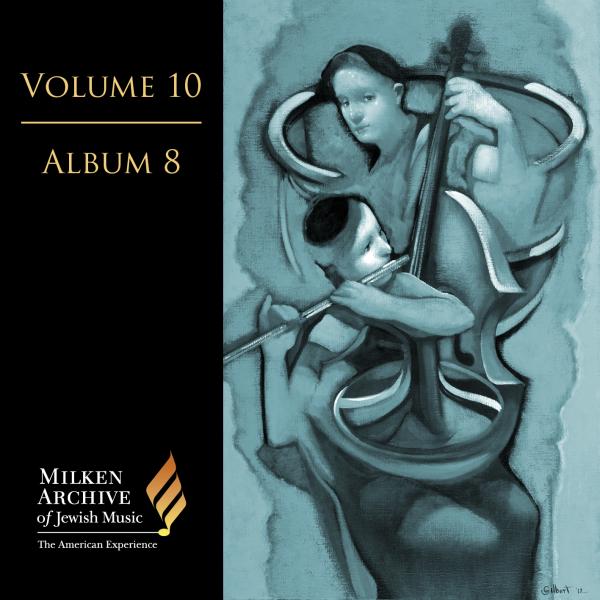Tracks
Liner Notes
Joseph Achron’s Stempenyu Suite (Suite from the music to the play Stempenyu the Fiddler), for violin and piano, dates to his relatively brief sojourn in New York (1925–34) as a Russian-Jewish émigré from the new Soviet Union via Berlin, prior to his relocation to Los Angeles. During that period he wrote incidental music for Maurice Schwartz’s Yiddish Art Theater, including for its 1929 production of Stempenyu, a stage adaptation of the eponymous novella by Shalom Aleichem (Shalom Rabinovitz, 1859–1916). In that story, Stempenyu is an eccentric, brilliant virtuoso violinist in typical eastern European Jewish wedding bands (klezmorim) who mesmerizes his audiences with his magical, electrifying, and nearly superhuman playing and his intense, evocative displays of emotion. His almost hypnotic persona—the way in which he brandishes his bow, produces heartfelt and heartrending singing tones that resonate in the depths of listeners’ hearts, and engages in histrionics and theatrical gyrations—has a particularly seductive effect on women. Without saying as much, Shalom Aleichem has created a Jewish counterpart to the legendary 19th-century Italian virtuoso violinist Niccolò Paganini, perceived by some as literally possessed by demons—perhaps even as a satanic incarnation—before whom more than a few ladies swooned. Shalom Aleichem describes Stempenyu vividly:
He reaches out and picks up his fiddle, and draws the bow over it only a single time—not more—when already it begins to speak … speaking, arguing, singing—with a typically Jewish sigh or sob in its voice; powerfully, with a cry from the depths of the heart and soul…. And when he is finished playing, he puts aside the fiddle and clutches at his heart. His eyes light up like two Sabbath candles, and his beautiful face now beams.
The violinist falls wildly in love with a woman who is promised to another; and although a part of her is put off by Stempenyu’s suspicious winning ways, she succumbs to his enchantment. In the end, she realizes the folly and returns to the original, more stable candidate for her hand.
As an incidental theatrical score, Stempenyu was not entirely successful in terms of audience acceptance. The Yiddish Art Theater attracted—or was designed to attract—a more educated, cultured, and sophisticated clientele than the audiences drawn regularly to the cruder, mass-oriented Yiddish melodramas, comedies, so-called operettas, and shows of the Second Avenue variety. Yet its patrons, although obviously open to serious drama based on literary sources, still tended to identify with incidental scores that relegated the musical parameters of productions to the popular realm, with simple, memorable, and transparent tunes unencumbered by artistically conceived treatment. Achron salvaged the music by reworking parts of the score as a concert suite for violin and piano. The first movement, “Stempenyu Plays,” represents Stempenyu’s virtuoso gifts on their own merits; the second and third movements refer to two popular celebratory dances at traditional eastern European Jewish weddings: the sher and the freylekh. The suite was premiered in 1931 by one of the major violinists of the 20th century, Joseph Szigeti.
Credits
Composer: Joseph AchronPerformers: Jascha Nemtsov, Piano; Ingolf Turban, Violin
Additional Credits:Publisher: Universal Edition
